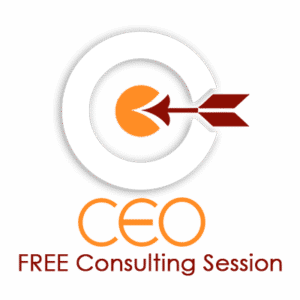
Summary: In the ever-evolving landscape of life, individuals must recognize and challenge outdated behaviors that hinder personal and collective growth. Too often, people find themselves trapped in a cycle of repetitive actions that stifle creativity, hinder collaboration, and impede progress. It’s time to break free from the chains of outdated habits and embrace change for a culture of innovation and adaptability at work and home.
Dear Dr. Sylvia,
I did it again!
I saw my outdated reactions at the family dinner table last weekend.
We had an early Thanksgiving dinner since many in the family were going out of town for a fun time in Cabo, Mexico.
I took a stand about, well, the specifics don’t matter. What matters is that I did the “fu*k you thing†to my mother once again!
And then, to make matters worse, I had a detailed report with a no-excuse deadline at work. Thus, we stayed home and will vacation during the holiday break at Christmas.
Sadly, the same issues peeked through my usual professional attitude at work.
Nonetheless, I did the same passive-aggressive dance in both situations.
Here is the short story: I hated deadlines and the pressure to be on someone else’s schedule as a kid. My mother was demanding, and I resisted. I would say “YES†and then not get whatever she wanted on time, and we would have a screaming battle.
The same thing is happening at work.
Remember: Your boss is NOT your mother, father, sister, or brother.
Yes, we are not going to Cabo! No, I don’t think the report will be done on time.
As I procrastinate, I am furious that I must be on my boss’s schedule. He is a screamer, just like my mom!
You constantly talk about how the patterns from the past play out in the present time.
I get it!
However, I need a larger picture of why I do what I do. I am not the first to yell; however, I know I participate to get the screaming match going full speed.
Signed,
Powerless in Pa.
Dear Powerless in Pa,
Firstly, let me congratulate you.
Huh? You wonder. Congratulate me for what?
For at least seeing how the pattern from childhood connects with your present pattern with your boss.
Let’s look at the big picture.
I will talk about business settings and add the family into the mix.
Repeating ingrained, outdated behaviors may provide comfort and familiarity, but it comes at a cost.
Organizations (and families) that cling to the past risk falling behind in an era where swift change is the only constant.
The reluctance to embrace change can lead to missed opportunities, decreased productivity, and a disengaged workforce.
For example, pattern repetition in the family can lead to the same things. A disengaged family is one of the saddest aspects of keeping outdated patterns.
It’s essential to recognize that what worked in the past may not necessarily be the key to success in the future.
You need to innovate; it’s the lifeblood of progress.
Fostering a culture of innovation requires a willingness to break away from old patterns.
Encouraging employees (family members) to think outside the box, explore new ideas, and challenge existing norms can lead to groundbreaking solutions and advancements.
Embracing change enhances individual creativity and contributes to the organization’s (family) success and resilience.
Leaders play a pivotal role in driving cultural change.
It’s crucial for leaders to lead by example, demonstrating a commitment to adaptability and a willingness to embrace change.
Encourage open communication and create an environment where everyone feels empowered to voice their ideas without fear of judgment.
By fostering a culture of continuous improvement, leaders can inspire a sense of purpose and motivation.
Breaking free from the cycle of ingrained, outdated behaviors requires a conscious effort from everyone.
As an illustration, start by identifying and acknowledging whether these behaviors stem from outdated processes, hierarchical structures, or resistance to new ideas. Encourage open dialogue and collaboration to find alternative approaches that align with goals and values.
I first started to see the family/work connection when I asked a senior VP who was involved with a hostile workplace lawsuit about his relationship with his father.
He was ready to throw me out of his office for overstepping boundaries. Luckily, I was able to calm him down, and soon he saw the connection between his attitude toward his direct reports, who were not working 24/7 as he expected with the way he attempted to please his dad.
In meetings, he would roll his eyes, make fun of excuses, and eventually start to yell and demand they do what he wanted the way he wanted. He became his father!
It was toxic, and thus, the lawsuit.
Read on to get ideas on breaking the patterns and making positive change happen.
Programs and books that spark self-awareness are gifts that keep on giving.
Individuals must prioritize continuous learning and professional development to adapt to the ever-changing landscape.
Here are some places to help you grow to be your best.
Above all, equip yourself with the skills and knowledge needed to thrive in a dynamic work environment. Attend workshops, engage in online courses, and seek mentorship opportunities to stay ahead of the curve.
In conclusion, it’s time to break the chains of outdated behaviors that hold us back in our families and professional world.
Embrace change, foster innovation, and create a culture that values adaptability.
By challenging ourselves, our kin, and our colleagues to break free from the past, we pave the way for a future where creativity, collaboration, and progress flourish.
Together, let’s build a workplace that thrives on innovation and sets the stage for success in the years to come.
To your success,
Sylvia Lafair
PS. Start with the Stress Mastery four-module program to gain a clear view of how behavioral patterns, like procrastination, had a head start in your childhood and how to change it to a healthy opposite and get work done in a timely manner.


